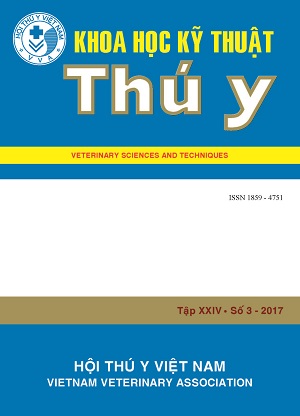Development of egg and larvae of Opisthorchis parageminus in environment and in intermediate host
Abstract
The result of this experimental study showed that in the natural water environment, the eggs of O. parageminus developed into miracidia. When miracidia were eaten by the first intermediate host (snail: Bithynia siamensis), inside the snail the miracidia hatched and developed further through the stages of sporocysts, rediae and finally cercariae. The young sporocyst contained many germinal cells having eyespots. The mature sporocyst covered by thin membrane, inside contained many redia with the size was 560-1100 μm (in length) x 310-420 μm (in width). The mature redia possessed mouth, pharynx, gut and the size ranged from 850 to 1300 in length and 250 to 360 μm in width. Cecaria escaped from the redia lived in snail liver then moved into water environment. The cercaria contained brownish pigment, having prominent oral sucker, ventral sucker, pair of eye spots, tail with the size ranged from 165 to 198 μm in length and from 86 to 98 μm in width. Cercaria have taken about 60 days to develop inside the snail. Cercaria penetrated under the scales of fish (Systomus binotatus), then its tail disappeared and became oval cyst, it is called metacercaria.
điểm /
đánh giá
Published
2018-12-25
Issue
Section
Nghiên cứu khoa học

